Your cart is empty
STORY BY Virginia Gewin
PHOTOS BY Carlton Ward Jr.
Blackbeard’s Ranch in southwestern Florida is hardly classic cattle-rustling terrain. Rumbling across his land in a swamp buggy, Jim Strickland steers past alligators and maneuvers through a dense mix of pines and saw palmettos. Cabbage palmssoar in the distance. Strickland points out threatened sandhill cranes (Grus canadensis), crested caracaras (Caracara cheriway), wetlands he restored to help improve drinking water, and gopher tortoises (Gopherus polyphemus) thriving after he burned invasive exotic plant species. Eventually, we happen upon the first cow. He grins proudly as he tells of finding black bear (Ursus americanus floridanus) tracks in the sandy soil, watching the head-bobbing antics of burrowing owls (Athene cunicularia), and searching hopefully for a glimpse of his “white whale,” the Florida panther (Puma concolor coryi).
Even in December, the air is sultry as Strickland describes his closest panther sighting: the tracks where the animal had dragged its prey away. “I’ve been in the woods my entire life, but I’ve never seen what I would swear on a Bible was a panther,” he says. Still, he is convinced that the key to the panthers’ success lies on the ground he and fellow ranchers steward. “A cattle ranch is the closest thing to pristine wilderness as Florida will ever get,” says Strickland, who was voted the Audubon Society’s Florida Sustainable Rancher of 2019.
More than 900 people a day move to the Sunshine State. Orlando alone is expected to grow by 50 percent in the next 20 years. Planned development projects will not only carve up scarce open space in central Florida but compromise the land’s ability to recharge dwindling aquifers, complicate downstream Everglades restoration, and potentially sever vital wildlife corridors. The current development trajectory is projected to consume 40,469 hectares (100,000 acres) of Florida natural and agricultural lands per year — a total of more than 2 million hectares (5 million acres ) lost by 2070.
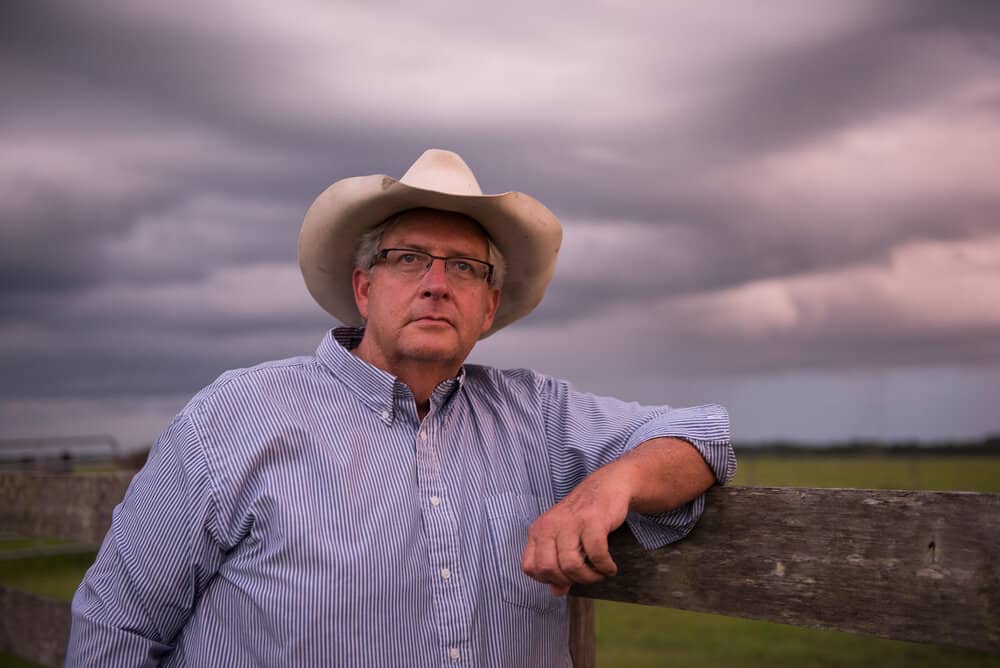
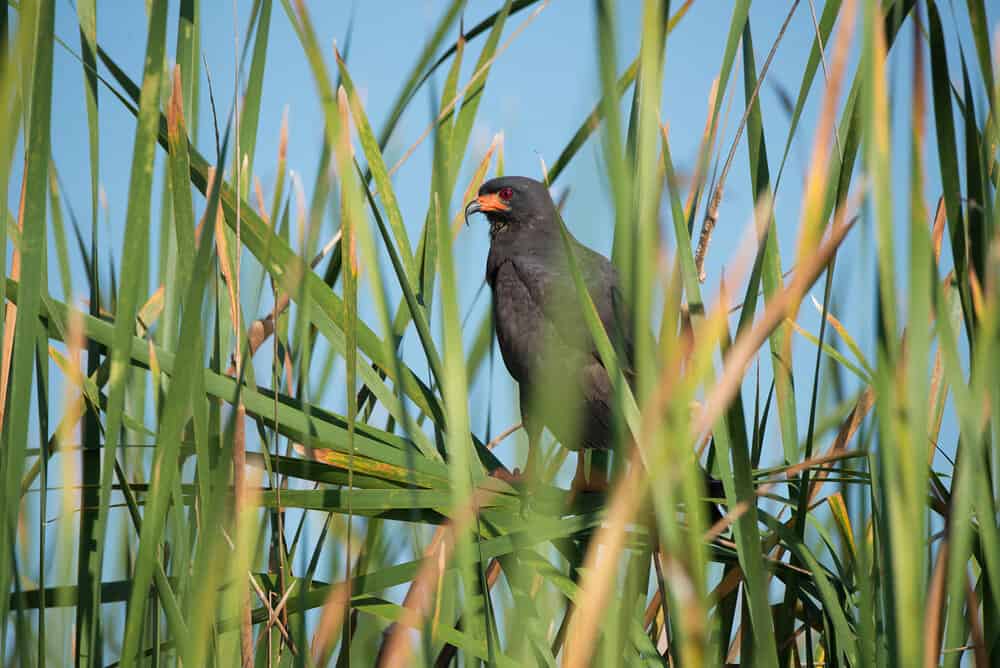
“Development is agriculture’s worst enemy,” says rancher Lefty Durando, who along with Strickland started the Florida Conservation Group, a collective of ranchers and conservationists who lobby for policies that will keep working lands solvent so they don’t succumb to development pressure. As much as 122,000 hectares (about 300,000 acres) of Florida ranchland have been lost over the past decade due to development, according to the Florida Cattlemen’s Association. At 21 million people, Florida has the highest population of any state in the southeast. Preserving land isn’t just critical for endangered gopher tortoises and wood storks. Humans need green spaces too — a point that often gets overlooked.
One reason that humans need that open land is access to clean water, which in Florida is an increasingly critical issue. The state suffers a panoply of debilitating water woes, including, most notoriously, algal blooms. Excess nutrients not only fuel summertime blooms of blue-green algae in fresh water, but also toxin-producing red tides that choke coastal saltwater regions. Land that isn’t paved allows surface water to filter through the soil and sediment, removing nutrients that might otherwise runoff into lakes or estuaries. And although “ranchers versus environmentalists” is a well-trodden trope, Florida’s troubles point toward a different paradigm.Strickland argues that Florida’s ranches provide water storage, nutrient capture, clean air, and wildlife habitat—largely free of charge. And they could do a better job, he says, if they were compensated for the crucial services that their land can provide.It’s simply not possible for the state government to buy, much less manage, enough land to provide and store clean water or prevent species extinctions.
Private ranches are crucial, says Julie Morris, conservation program manager for the National Wildlife Refuge Association. Strickland has spent a lifetime observing how South Florida’s wildlife, including 50 endangered species, uses the subtropical landscape. When researchers first asked to study burrowing owls on his ranch, he agreed — and even offered a hypothesis counter to the scientists.’
“The researcher said he was going to show that cows damage the owl populations, and I said ‘I’ll bet you they don’t,’” recalls Strickland. He was right.”
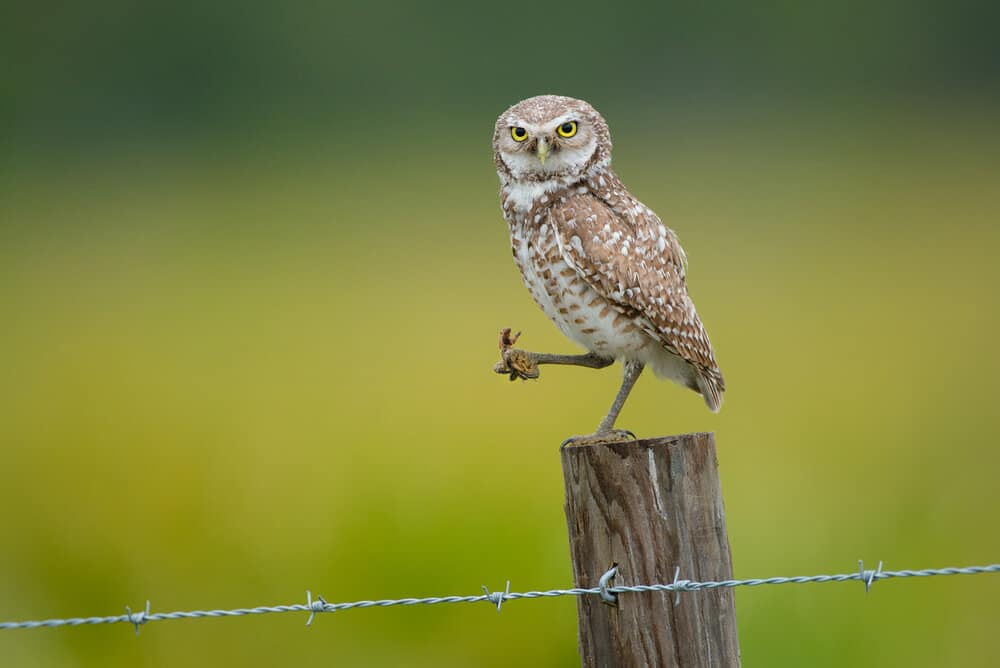
“The researcher said he was going to show that cows damage the owl populations, and I said ‘I’ll bet you they don’t,’” recalls Strickland. He was right. The burrowing owls thrived in grasses kept short by the cows. Liz White, a University of Florida PhD student who studied the owls by outfitting them with tiny back-mounted radio transmitters, found that the ranch supported a healthy owl population. “People criticize and say cattle ranches are terrible,” she says. But amidst the region’s dramatic increase in development, “it’s the best habitat we have left,” she adds. That’s true not only for birds that need some mix of dry and wet open grasslands, such as burrowing owls, sandhill cranes, kestrels (Falco sparverius paulus), and the federally listed wood storks (Mycteria americana) and Everglade snail kites (Rostrhamus sociabilis plumbeus), but also for species that need space to roam, such as black bears and panthers.
Florida has been experimenting with innovative conservation incentive programs, like payments for panther or gopher tortoise habitat, or for water storage, reimbursement for livestock loss to panthers, and conservation easements. These often under-funded endeavors have raised public awareness of the value of these lands. When it comes to experimenting with new incentives, “Florida is cutting-edge because we have to be,” says Morris. “We have all this biodiversity, under siege from development and climate change.”
In a state that will celebrate the 500th anniversary of Juan Ponce de Leon’s introduction of cows next year, ranchers acknowledge that not all ranchland is managed well. Still, they are frustrated that cattle are frequently blamed for carbon emissions without being credited for the environmental buffers their pastures provide.
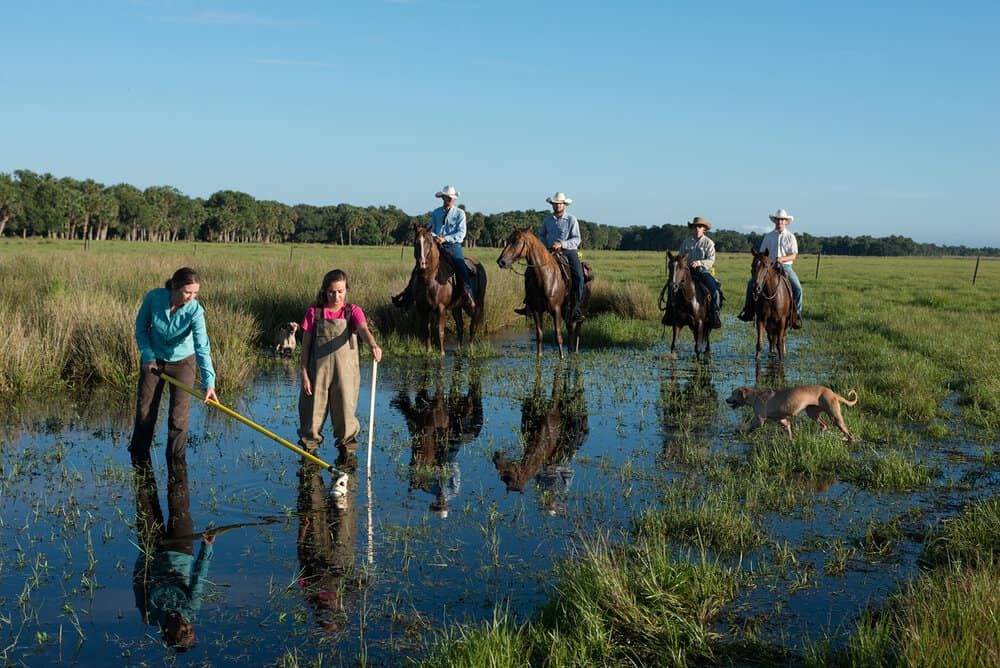
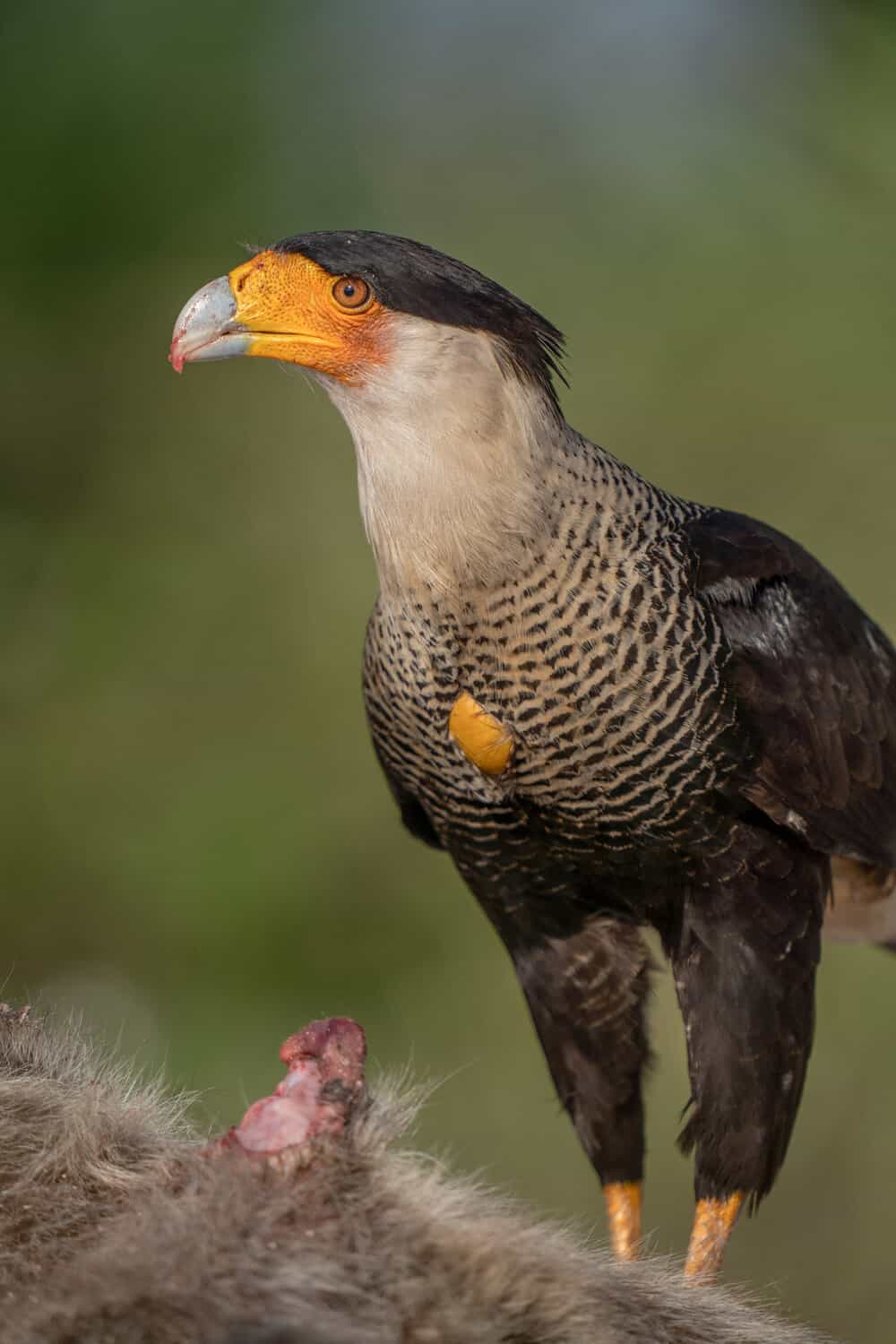
Southwest Florida is home to the largest and fastest-selling planned residential developments in the country. In the 1990s, the Uihlein family, owners of Schlitz Brewery, began transitioning their 12,500 hectares (31,000 acres) of former ranchland into Lakewood Ranch, which now houses 36,000 residents. “From there, development radiates out,” says Strickland. Offering incentives for good land management is arguably the most cost-effective solution to many of the state’s woes. And if the state doesn’t pay, developers are standing by.
Liesa Priddy’s 3,800 hectare (9,500-acre) ranch sits in the heart of panther habitat, just north of the heavily forested Big Cypress National Preserve. The ranch has been in Priddy’s family for three generations — prior to a concerted effort at panther conservation that began in the early 1990s. That’s when five female panthers from Texas were introduced to boost genetic diversity and the overall health of the Florida population. This “genetic rescue,” as it’s called, has wildly exceeded expectations. There are now 200 adult cats roaming and breeding in the area. And that success comes at a price. Priddy estimates that her operation loses more than $20,000 worth of calves each year to panthers.
A 2015 study, which included Priddy’s operation, found that ranches lose roughly 5 percent of their calves to panther predation. “Who else would accept such a loss?” asks Priddy. “And there’s nothing we can do about it because it’s a federally protected species. We like having panthers on our property.” The problem, she says, is that there are just too many.

The increase in panther numbers in the area is due, at least in part, to Priddy’s responsible land stewardship—an irony that presents a particular challenge. On more “natural” ranches, like hers, that maintain woodlands intermixed with pasture, panthers can more easily take calves by stalking them and pulling them into the woods, says Larry Williams, a U.S.Fish and Wildlife Service state supervisor of ecological services in South Florida. “We don’t want to create a disincentive, where ranchers who provide the best habitat in big blocks have a bigger burden of having higher numbers of calf losses,” says Williams. “They start looking for other income sources, like land development.”
“Working ranchlands are one of the primary reasons Florida panther recovery has been so successful,” says Erin Myers, a former U.S. Fish and Wildlife Service private lands biologist.”
“Working ranchlands are one of the primary reasons Florida panther recovery has been so successful,” says Erin Myers, a former U.S. Fish and Wildlife Service private lands biologist. In 2015, Myers helped design a pilot program to pay ranchers to maintain diverse habitats for panthers. She identified two things that would most help ranchers. “They wanted a program that paid them a base amount for the habitat their lands provided, and they wanted [the program] to help offset the costs of lost calves,” she says. Priddy says if she could just get compensation for her calves, she’d be happy. “I’m not looking to make money,” she says. “I’m just looking to be made whole.” Neither the federal government nor the state funded the program designed by Myers.
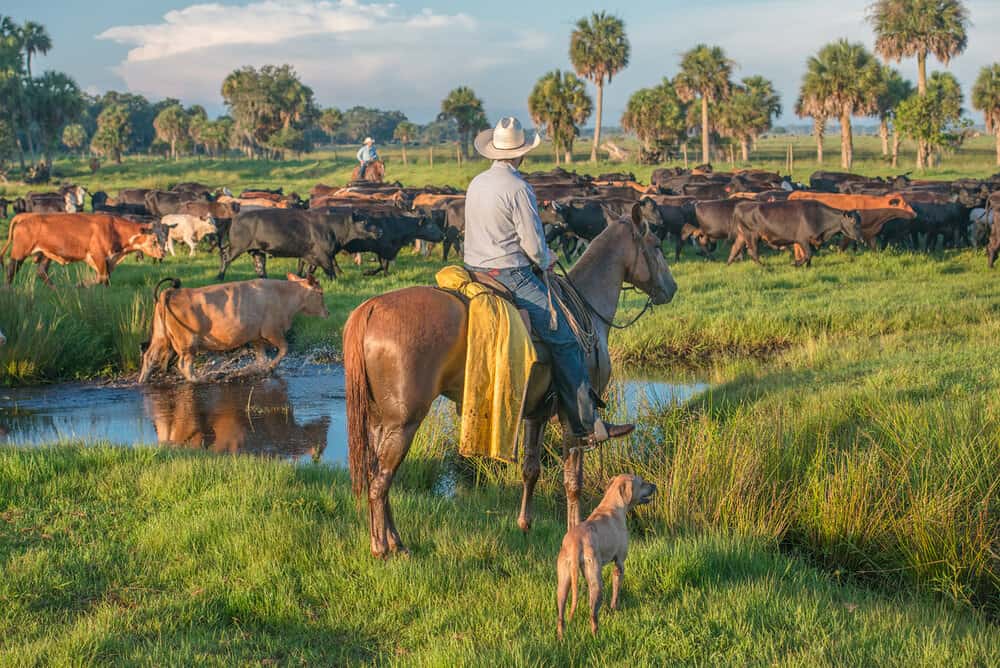
Ranchers can seek assistance from the U.S. Department of Agriculture to support panther habitat management and get reimbursed for livestock losses, but the programs can be confusing and onerous to navigate.The USDA’s Natural Resources Conservation Service officials say they have struggled to sign up landowners to receive panther habitat cost-share funding, despite having a $642,000 pot that is scheduled to run out in September 2021. But attentive ranchers and conservationists, including Priddy and Morris, were unaware that money was even available until a surprise press announcement was issued in May to rustle up new applicants.
When Priddy sought compensation from the USDA Farm Service Agency’s livestock reimbursement program a couple of years ago, the process was tedious and time-consuming. To receive payment, ranchers were required to prove that a calf had been killed by a panther. That’s a big ask when secretive panthers hide their prey in the woods. It took Priddy months of paperwork and an eight-hour drive to appeal her initial denial — all just to recoup roughly $10,000, or 40 percent, of what she had lost.
Priddy’s Collier County ranch is in the heart of the Florida housing boom. Not surprisingly, some ranchers in the area have chosen to sell. In fact, Priddy is part of a collective of landowners who are involved in a multi-rancher plan to convert 18,000 hectares (45,000 acres) into housing to potentially attract up to 300,000 new residents by 2050. Since that area is prime habitat for the Florida panther’s survival, the collective will help to identify which of their areas will be maintained for conservation. South and central Florida ranchlands like Priddy’s are critical to panther survival. Nearly 85 percent of privately owned ranchland not already protected by conservation easements is within theFlorida Ecological Greenways Network, identified by the state as land conservation priorities. A subset of the network, the Florida Wildlife Corridor, still connects the Everglades, Georgia, and Alabama, largely via ranchlands. These intact, connected landscapes identified by scientists as necessary to The Greenways Network are used by two state-funded conservation easement programs to evaluate which ranches are high priorities. In 2015, Priddy received $3.75 million to put 648 hectares (1,600 acres) into a conservation easement.
Unfortunately, in the last 10 years, the state hasn’t funded the land conservation network sufficiently to make progress, says Tom Hoctor, Director of the Center for Landscape Conservation Planning at the University of Florida in Gainesville, who earmarked the parcels necessary to complete the network. An earlier program raised $3 billion — $300 million per year for a decade — and preserved 688,000 hectares (1.7 million acres). But political appetites have shifted such that, last March, the state legislature approved just over $77 million for conservation easements. And even that, which required a political battle, was a huge improvement over the $0 approved the year before. Conservation easements allow the state to buy the land for about half of its market value, “and the rancher takes care of it,” Hoctor says. “If we lose these ranches to development, we are going to lose almost all the habitat value.”

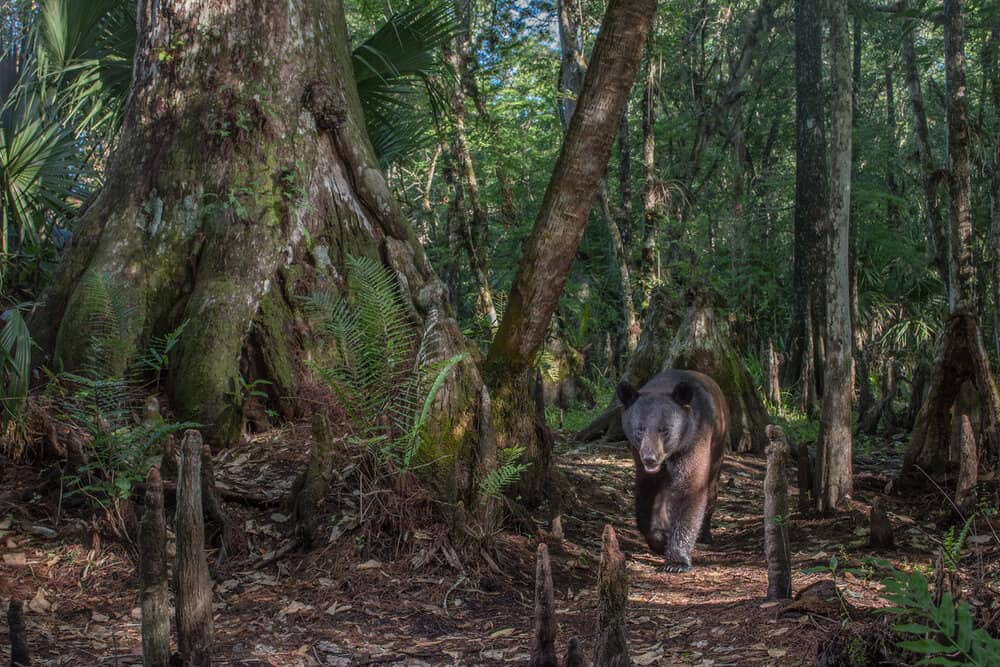
Even when conservation easements work, though, they still can’t compete with the money ranchers can get from developers. “Ranchers are typically not rich,” says Morris. “They operate on a shockingly low profit margin.” Still, many ranchers are trying to save lands by tapping into their value, knowing that their children may make different choices. In the race against development, ranchers need all the money they can get, says Paul Gray, Audubon’s Florida Everglades Restoration program science coordinator and a ranch owner himself. Even if they sell a parcel as a conservation easement, they are leaving money on the table, he adds. It took four years, but rancher Tommy Howze got a conservation easement through one of the state programs, the Rural and Family Lands Protection program, in 2018. “The property we have is really pretty. It’s old Florida. I would never sell it in my lifetime, or do some intensive development on it,” he says. “But that’s not to say my grandchildren wouldn’t do it.”
A growing group of conservation scientists argue that there is yet another, largely untapped way to fund land conservation on ranches, by focusing on something seemingly unrelated. Ranchlands, they say, provide a significant enough amount of open space to protect not only endangered species but also water. Last year, the federal government earmarked $200 million to help restore the Everglades by fixing aging dikes around Lake Okeechobee and preventing polluted farm and storm runoff. In the 1.1-million-hectare (2.6-million-acre)watershed that serves as the headwaters of the Everglades, more than one-third is ranchland. Runoff from farm fertilizer, stormwater, and leaky septic tanks all contribute to a toxic stew of phosphorous, nitrogen, and other nutrients that can, if not managed properly, spill into waterways and fuel the algal blooms.
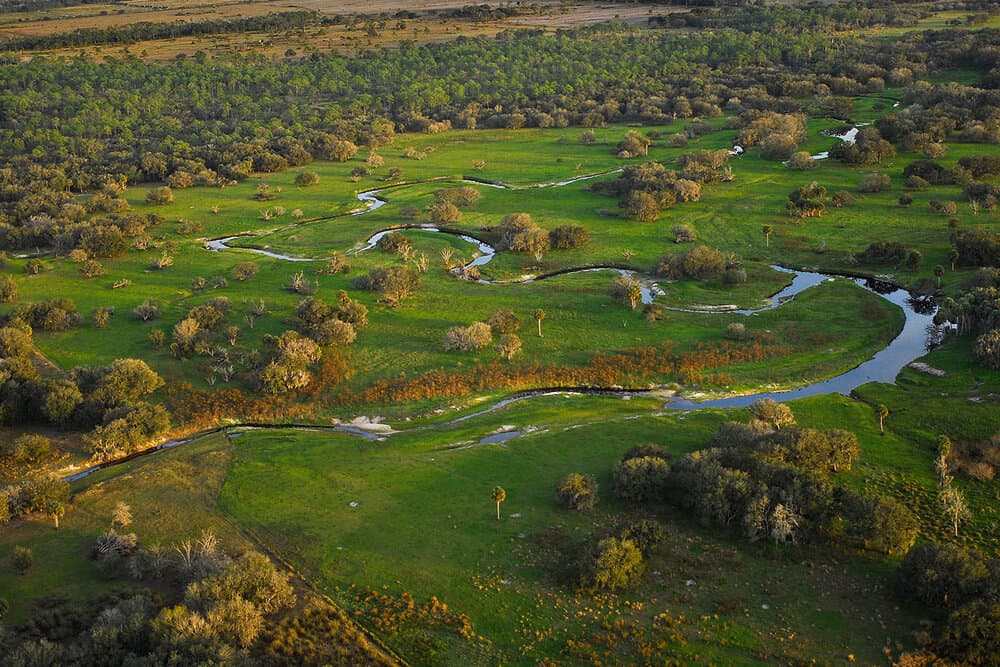
“Where the cows are most dense [they overlap] not only with threatened and endangered species in Florida, but also with water quality issues,” says Betsey Boughton, program director of agro-ecology at the Archbold Biological Station, a research institute in Lake Placid, Florida. But these undeveloped lands also provide the capacity to hold, purify, and store water. Florida’s billion-dollar beef cattle herd produces more than 800,000 calves annually, most of which are shipped to other states to be raised and eventually processed into beef. The 13,734 cattle operations are overwhelmingly family-owned, but they vary from small endeavors with only 50 cows to several of the country’s largest cattle ranches. At Archbold’s Buck Island Ranch, home to 2,700 head of cattle that are tracked by sticky notes on a map in the main building, Bought on studies the ecosystem services that ranches and associated native ecosystems provide. “We are not saying that ranches are pristine ecosystems, but we’re trying to tell a balanced story,” she says. Long-term water sampling on the property shows that Buck Island’s total concentration of phosphorous hasn’t changed much over time, and, although relatively high, it’s below the regulatory limit. Despite virtually no applications of phosphorous fertilizer in more than 30 years, the persistent levels show how long it takes for nutrients in the soil to dissipate.
But over that same period, an additional source of nutrient pollution has grown. “The number of cows has stayed same, but the number of people has exponentially increased in Florida,” says Boughton. While agricultural lands get the lion’s share of blame, researchers have also identified septic tanks as an overlooked source of nitrogen and phosphorous. As well, ranchers chafe when they are singled out for carbon-emitting cow burps. Howze, the rancher who never wants to develop his land, says that to complain about cows while building more housing is hypocritical. “The carbon emissions talk about cows is just bull,” he says. “They don’t compare cows to a subdivision’s cars or emissions.” In fact, Archbold has found that grazed systems store more carbon than ungrazed systems.“
Ranches are going to be critical players in conservation in Florida, especially of water resources,” says Boughton.Audubon’s Gray agrees that ranchlands must be part of the solution. “We can build reservoirs which will cost billions,” he says, or “we can pay ranchers to plug the ditches and store water.” Since 2011, Buck Island has taken advantage of a state program that pays ranchers to block ditches — in order to store, rather than drain, water and prevent surface-water runoff. It is one of dozens of dispersed water quality improvement projects that have been overseen by the South Florida Water Management District. As of 2020, more than 18,400 hectares (45,565 acres)of land retained nearly 30 billion gallons of water per year, allowing it to filter through the soil rather than pollute streams and estuaries.While the programs offered ranchers enough financial incentive to avoid ranch conversion to more intensive agriculture or development, the state has since focused more on big water storage projects rather than encouraging widespread adoption by farmers and ranchers, says Boughton. But dispersed water storage offered yet another benefit — increased wetland habitat for birds and amphibians. Paul Gray, Audubon’s Florida Everglades Restoration program science coordinator, says bitterns, marsh wrens, avocets, and thousands of shorebirds have stayed on his ranch for two months straight.
“When they are on your property, it’s great feeling, almost like, ‘I’ll take care of you,’” says Gray. Yet that feeling doesn’t pay the bills. Gray says that he and other ranchers are inundated with letters from realtors wanting to buy or sell their land. “Half of Florida is either in a city or in conservation,” he says.“The other half is up for grabs.” But anything that replaces ranches — be it housing or more intensive agriculture —will be worse for traffic congestion, waterways, and wildlife, he says.
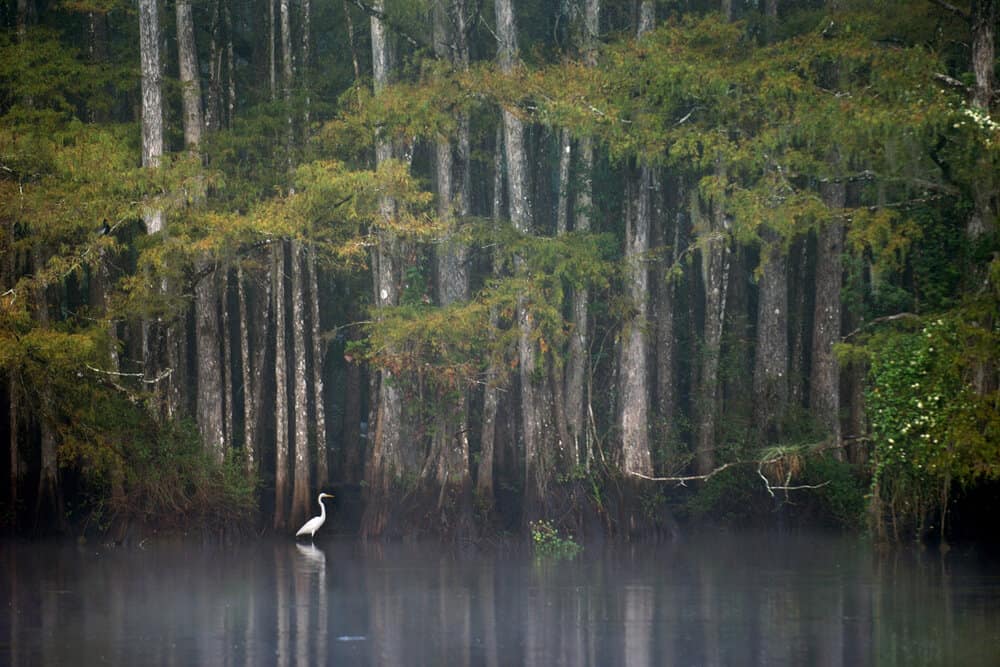
Given unrelenting development, Florida is one of the first states to face a critical juncture — rethinking society’s preconceived ideas about land protection. What is the valueof lost greenways and all the services they provide? What happens if they are lost forever? The state will either chart a viable path forward, in part by figuring out how to pay for land management that benefits society, or pave its way to becoming a cautionary tale.
“The state will either chart a viable path forward, in part by figuring out how to pay for land management that benefits society, or pave its way to becoming a cautionary tale”
It’s not just ranch acres in Florida that are under threat. Roel Lopez, director of Texas A&M’s Institute of Renewable Natural Resources, says the state lost more than 405,000 hectares (1 million acres)of privately owned farmland and forest to development between 1997 and 2012. Cattle ranching may have begun in Florida, says Strickland, but as ranchers age and face retirement, their children choose other professions, and profitability declines, they have two increasingly likely, yet unsavory, options: Go bankrupt or sell to the highest bidder.
By and large, ranchers don’t want to see these habitats developed. And they are willing to take half the amount of a commercial sale so that an easement can help them conserve wildlife and water. But someone needs to pay. There are more than 2.02 million hectares (5 million acres), tallying $20 billion, on the state’s conservation land protection team’s “desirable”wishlist, according to Hoctor, the Florida Greenways Network planner.
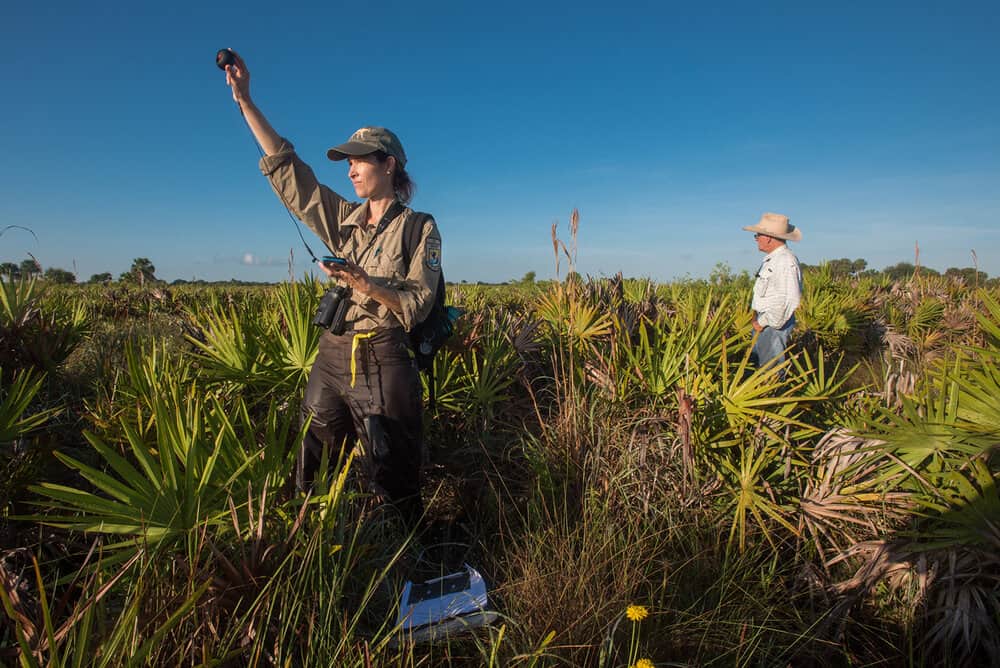
“We need all of these programs funded to the fullest extent politically feasible to have any chance of protecting these lands before they are lost over the next 20 to 50 years,” he says. Given future land-use projections, says Morris, of the National Wildlife Refuge Association, “it’s kind of ‘all hands on deck’ time. The ability to value ecosystem services and pay for those services is going to be needed in order to keep habitat intact.”
For Strickland, it’s pretty straightforward. “If a rancher can’t make a profit, it will never be sustainable,” he says. Payments for ecosystem services will save Florida, says Strickland, “but Florida’s going to have to pay for it.”
Durando, the rancher who helped start the Florida Conservation Group with Strickland, says that managing his land for wildlife also benefits his cows. For example, when he burns to clear brush, high-protein grass grows up that benefits his cattle as well as quail, turkeys, and deer that eat it — and opens up the landscape for such species as the endangered Florida grasshopper sparrow (Ammodramus savannarum floridanus). Durando maintains one of the last best patches of the sparrow’s preferred dry prairie. “The sparrow likes things pretty clean,” he says, in order to spot potential predators. “I just felt that if we could help this little guy survive, I want to be a part of that.” His goal for the rest of his life, he says, “is to try to keep central Florida from being developed. But I can’t fault a family that needs to sell.”
This story originally appeared in bioGraphic, an online magazine about nature and sustainability powered by the California Academy of Sciences.